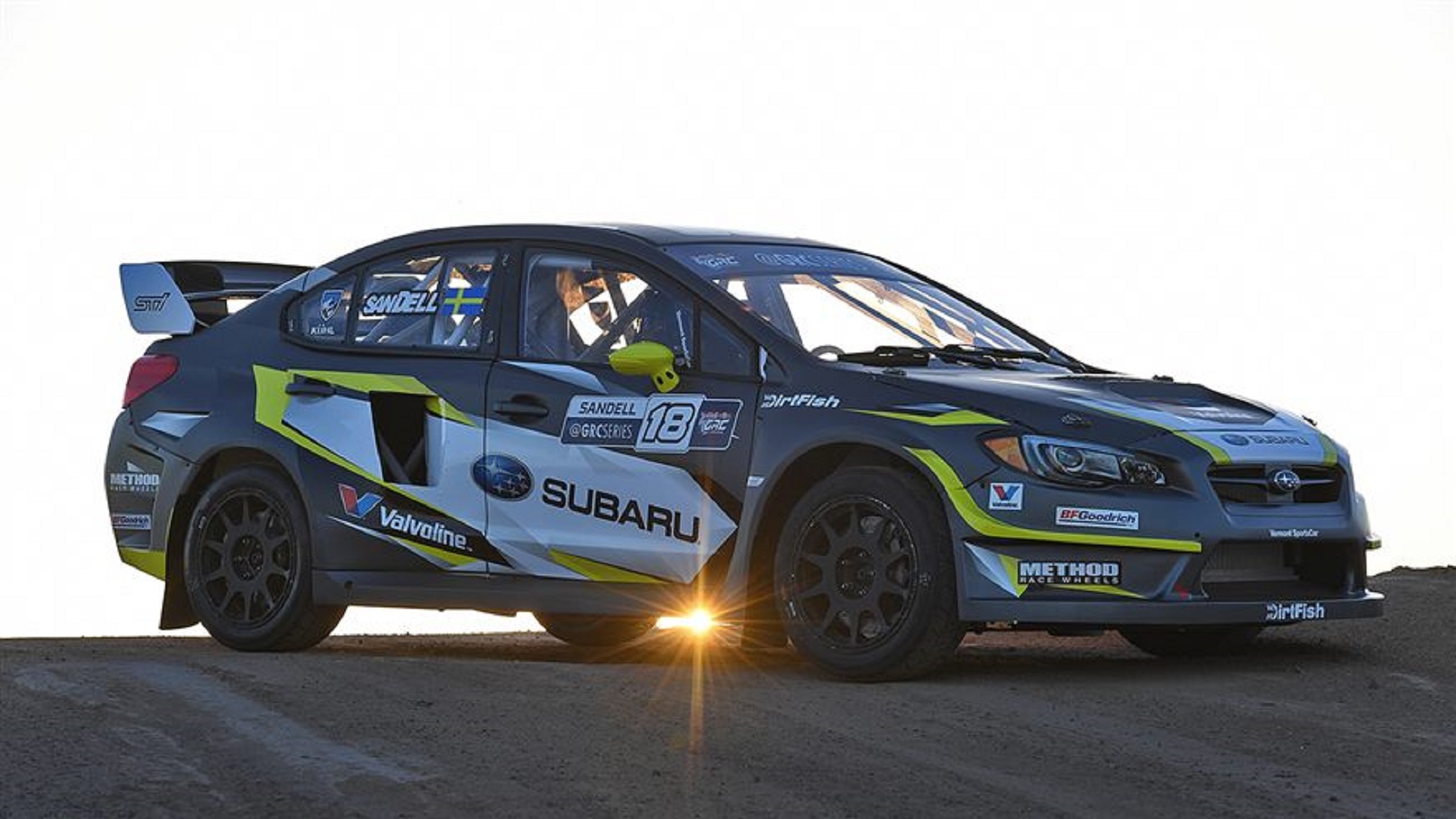

Subaru Rally Team USA competes in both American Rally Association stage rallies and Red Bull Global Rallycross. Both series use production cars that are modified with sequential transmissions, stronger suspension to handle gravel conditions and high-speed jumps, strong roll cages to protect the occupants in a crash, and of course, more horsepower. While the two disciplines seem quite similar on paper, there are also some important differences.
Subaru can’t just take one of their GRC cars and use it in an ARA rally, or vice versa. The differences demonstrate some clever solutions for problems unique to the demands of each racing series.
Each car uses tires and fuel cells that meet the requirements of their race sanctioning organization. The most obvious difference is that rally cars must accommodate both a driver and a co-driver. There are no co-drivers in rallycross, so only a driver’s seat is required. Also, rally cars must be street legal to travel on public roads from stage to stage. This means not only retaining all of the standard lighting but also adding auxiliary lights to light up rally stages at night.
GRC cars never see the street so their designs can be a bit more gonzo. The ARA requires a 33mm restrictor on the intake, limiting the rally car to 320hp – not much more than the 305hp of a stock WRX STi, though its 420 lb-ft of torque is a generous bump above the street car’s 290 lb-ft. GRC, on the other hand, requires a 45mm restrictor. The 12mm difference may not seem like much, but it allows the GRC cars to generate a whopping 580hp and 650 lb-ft of torque.

Another major difference is in the cooling system. The rally car has its radiator up front, as expected. But because of the frequent car-to-car contact in GRC, Subaru Rally Team USA puts the cooling system inside the car where the rear seatback would normally be. The back doors have large air ducts to channel air into the back seat area, and the trunk lid has a large hole in the back for air to escape after passing through the radiator. This eliminates cooling system problems as a result of hitting the wall or another competitor on the track.
It may seem like the stage rally car is somewhat unloved while the GRC car gets all of the attention, but that’s not the case at all. Subaru Rally Team USA prepares the rally cars to the limits of the rules as well as reliability. And while the GRC car has a polycarbonate windshield, the rally car gets a specially heated windshield to prevent it from fogging up.
Subaru Rally Team USA has long been dominant in stage rally, with drivers David Higgins and Travis Pastrana scoring a one-two finish at the Susquehannock Trail Performance Rally last weekend. With Chris Atkinson taking Sunday’s Red Bull GRC podium in third and Patrik Sandell placing a respectable fifth, it’s clear that Subaru is working hard to bring their winning ways to GRC as well.